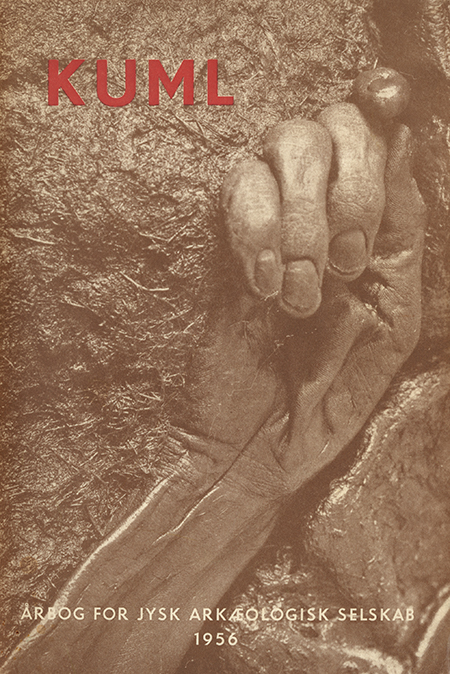Patalogisk-anatomisk og retsmedicinsk undersøgelse af moseliget fra Grauballe
DOI:
https://doi.org/10.7146/kuml.v6i6.97293Nøgleord:
Grauballe, peat-bog body, moselig, anatomisk undersøgelse, anatomical investigation, forensic, medicinal, retsmedicinskResumé
Pathological-anatomical and Forensic-medicinal lnvestigation of the Peat-bog Body from Grauballe
[The article opens with a detailed forensic-medicinal description of the exact condition of the body in its original position (taken 12th May 1952) and when turned onto its back (taken 21st May 1952), followed by a detailed description of the interior of the body after opening. The skull was not opened out of consideration for future museum exhibition. After these descriptions follow the conclusions, which are here translated in full.]
As a result of these investigations the following conclusions can be reached:
This most unusually well preserved body has, as a result of the particular composition of the earth in which it has lain, undergone a process of conservation which appears to resemble most closely a tanning. This has made the skin firm and resistant and has to a high degree counteracted the various processes of decay which normally commence soon after death. The soft inner organs have, however, not been able to survive, and at the same time the bones have been subjected to a decalcifying process which has left them soft and capable of being hent and flattened, as has happened, inter alia, with the bones of the head.
The bone structure and the state of the hair make it very highly probable that the subject is an adult male, and the condition of the teeth suggests that he was an individual of somewhat advanced age.
On the front of the neck was found a large wound stretching from ear to ear. It lies fairly high up on the throat, and the edges are moderately smooth though the lower edge of the wound shows a cut in the centre. In the interior of the wound the gullet gapes wide open, and there is a wide gap between the 3rd and 4th vertebrae of the neck.
This wound may with certainty be interpreted as an incised lesion, probably caused by several cuts inflicted by a second person. The direction of the wound and its general appearance makes it unlikely that it could be self-inflicted or accidentally inflicted after death.
The other lesions, comprising breakages of the left thigh-bone and shine-bone, various wounds in the face, and the flattening of the head already remarked, may be assumed to have taken place after death.
No sign of disease could be detected.
The microscopic investigation has added no material facts to our information.
The investigation of the hair suggests that the subject was dark-haired. The reddish coloration is presumably accounted for by the body having lain in peat, and has been observed in the case of several other discoveries of peat-bog bodies.
Willy Munck
Downloads
Publiceret
Citation/Eksport
Nummer
Sektion
Licens
Fra og med årgang 2022 er artikler udgivet i Kuml med en licens fra Creative Commons (CC BY-NC-SA 4.0).
Alle tidligere årgange af tidsskriftet er ikke udgivet med en licens fra Creative Commons.


